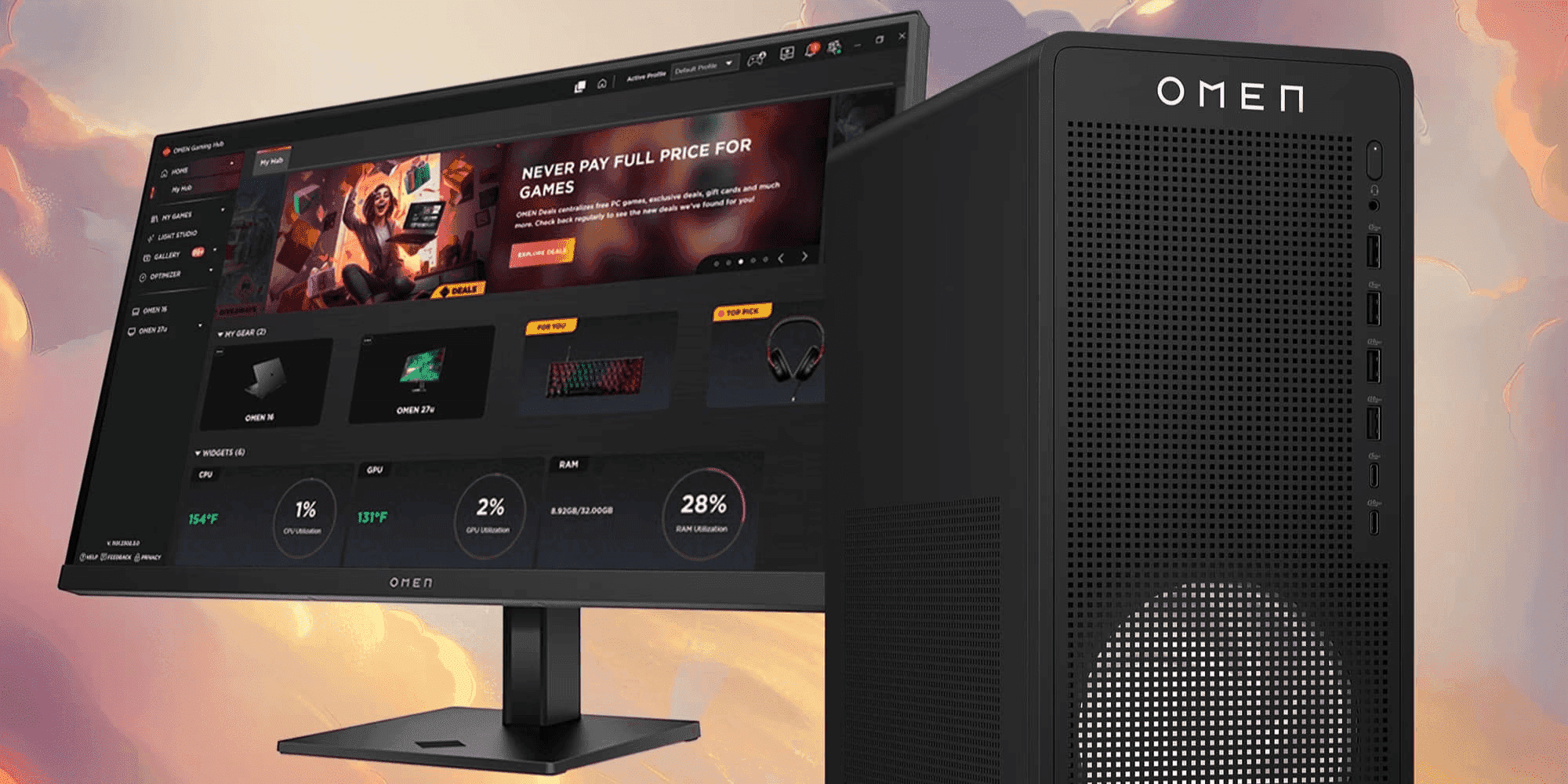Thank you for visiting the AUSTRALIA HP Store
-
Contact Us
CONTACT USCall us
- Sales
- 1300 540 516
- Technical support
- 13 23 47
Exc. public holidays
Chat with us- Our specialist are here to help
- Live Product Demo
- Sales
- 61288061500 (WhatsApp)
-

- Post Sales
- 61288061700(WhatsApp)
Exc. public holidays
Live product demo
Submit feedback We value your opinion! - My Account
Cloud Gaming Services and Their Impact on the Industry


In the last decade, media users have moved away from locally hosted data and towards cloud-based streaming services such as Netflix, Spotify and Amazon Prime Video. That trend has also extended to the gaming industry, with cloud gaming rising.
What is cloud gaming?
Cloud gaming is a form of streaming service where users can enjoy the latest games using cloud-based infrastructure rather than relying solely on their local hardware. It differs from traditional game hosting in a few key areas.
- Traditional gaming relies heavily on local hardware to run the games as opposed to cloud gaming which uses cloud-based processing.
- The traditional method of game hosting uses dedicated servers in data centres to process data, while cloud gaming takes advantage of cloud-based infrastructure.
- When using traditional gaming services, players are connected to a server in their region, with the latency varying based on how far they are from the server. Cloud gaming has a more global server distribution, which can result in less latency with the right infrastructure.
Technological foundations
The concept of cloud gaming has been around for a while, but it took time for the necessary infrastructure to catch up. Cloud infrastructure encompasses various components to build and support cloud computing, including hardware, network resources and storage. For cloud gaming to be commercially viable, it must offer low latency and high-definition video with a low response time. Streaming protocols that supported the transmission of interactive, multimedia content also needed to be developed.
Key players in cloud gaming
Jumping straight into it, here are four major cloud gaming platforms and services currently available in Australia.
GeForce® Now
Created by NVIDIA®, GeForce Now supports PC-style cloud gaming on multiple devices. In Australia, their telecommunications provider is Pentanet, which is part of the GeForce NOW Alliance. They use NVIDIA RTC Servers to provide an optimised cloud gaming experience.
- Compatible with PC, Mac, SHIELD TV, Android device, iPhone and iPad
- Bring Your Own Game (BYOG) service
- Four subscription tiers available
Amazon Luna
With Amazon Luna, you can pay a subscription to access a game library or play select games you already own by linking your Ubisoft account. The available game libraries include Luna+, Ubisoft+ and Prime Gaming.
- Available on PC, Mac, Fire TV, Fire tablet iPhone, iPad, Android phones and select Smart TVs
- Compatible with a variety of controllers including keyboard and mouse, Xbox One and Luna Controller
- Broadcast directly to Twitch from a compatible PC or Mac
Xbox Games Pass Ultimate
Released by Xbox, Game Pass Ultimate gives players access to hundreds of console and PC games throughout their membership. It runs through the Xbox website, Xbox apps and certain Xbox consoles. Currently, the cloud gaming aspect, Xbox Cloud Gaming, is undergoing Beta testing.
- EA Play membership is included
- Online multiplayer is included for console
- Compatible with select Android, Smart TV, iPhone, iPad, Mac and PC devices
Sony PlayStation Plus Premium
One of the direct competitors to Xbox, Sony PlayStation offers its own streaming and cloud-based gaming platform through PlayStation Plus Premium. Players can instantly stream a range of titles, saving space on their devices' inbuilt storage.
- Three subscription tiers available
- Stream games to PC, PS4 console or PS5 console
- Store up to 100GB of PS4 game data and 100GB of PS5 data on the cloud
Impact on gaming accessibility
Cloud-based gaming enhances the accessibility for gamers by reducing the need for high performance hardware. PC gamers who are on a budget and can’t afford to buy a high-spec gaming laptop or upgrade their current PC may be able to turn to cloud gaming instead.
With some cloud gaming services, gamers can also choose which tier is appropriate for their device and internet capabilities, and their budget. For example, GeForce Now has four subscription tiers: Basic, Casual, Priority and Ultra. Each tier has different specifications, with the more affordable tiers having a lower resolution, priority and session time.
- Basic: Up to 1080p at 60 fps with low queue priority and 60-minute sessions
- Casual: Up to 1080p at 60 fps with medium queue priority and 3-hour sessions
- Priority: Up to 1080p at 60 fps with top queue priority and 6-hour sessions
- Ultra: Up to 4K at 60 fps with exclusive access to RTX 3080 servers and 8-hour session times
Having the different subscription tiers creates a diversified accessibility model that gives gamers more flexibility to access the titles they want to play.
Gaming on various devices
Looking at the different platforms discussed previously, you can see a wide range of devices are supported for cloud gaming. This includes PC, Mac, smartphones, iPad, consoles and Smart TVs. Something that sets cloud gaming apart from the traditional hosting model, from a player's perspective, is being able to swap between devices and access saved files to keep progressing through the gameplay or building on a single character profile.
Benefits of cloud gaming
There are a range of benefits to cloud gaming that are encouraging gamers to make the switch.
- Diverse device compatibility and cloud-based saved files allow for easy cross-platform play
- There are no game installation or update files that use up memory on your device hardware
- Gain instant access to available titles
- With some platforms, there’s the option to choose access tier that suits your context
There are also benefits to the gaming companies that will likely entice them to continue the development of cloud-based gaming in future.
- Greater compatibility with devices enables the development of a larger consumer base
- Cloud-based servers can be more affordable than having dedicated servers in data centres
- Developers are less constrained by the player's local hardware when designing new games
Challenges and limitations
As with all new technologies, there are certain challenges cloud gaming faces, as well as some limitations for the system.
The challenges are largely around cloud infrastructure. For gamers to have the best experience, the latency must be as low as possible, especially for fast-paced games like first-person shooters (FPS). Scalability is also a concern, as the system needs to handle a high volume of concurrent users without impacting gameplay. Another challenge is cybersecurity, ensuring that player data, privacy and payment information are always kept secure.
In terms of potential drawbacks, one of the key issues for gamers is ownership of the game. With the traditional model, you generally pay once and have access to the game under a lifetime licence. Many cloud gaming services are subscription-based, so once you stop paying, you lose access to the games.
Another drawback is the inherent internet dependency. Players with slow or intermittent internet can experience interruptions to their gameplay, and you don’t have the option to play offline. Also, if your internet connection is metered or has a set monthly allowance from the service provider, it could be an issue. Gamers need to have the bandwidth and data allowance to stream large amounts of data for cloud gaming to work.
Technological advancements
Various companies in the gaming industry are working on cloud gaming, so there have been many technological advancements in recent times.
New competitors have entered the market, with Microsoft xCloud being one of the most recent launches. Competition often leads to a better outcome for consumers as companies strive to offer the most enticing system to maximise profits.
The number of available titles on different platforms has increased, with game developers and publishers embracing cloud gaming. This is likely to continue, with games possibly being developed in a way that optimises them for cloud gaming from the start.
Introducing 5G technology means lower latency and faster speeds for gamers using that network. This could increase the adoption of portable gaming and encourage people to engage in cross-platform gameplay using cloud-based save files.
As cloud gaming becomes more popular, there will likely be an increased investment in cloud infrastructure development. Having an expanded server network that can cope with the demands of streaming games will help reduce latency and create space for developments that enhance the gaming experience, such as better graphics and immersive sound effects.
Impact on gaming industry revenue
Just like the TV, film and music industries, the revenue model of the gaming industry is set to change with the rise of streaming services. Subscription-based models like those offered by PlayStation and Xbox will likely become the norm. In 2021, the subscription gaming market was valued at over $17 billion worldwide; by 2030, this is expected to more than double.
Summary
Based on current trends and market analysis it seems that cloud gaming will be the way of the future. It offers great benefits for consumers and businesses, and the technology needed to support it is better than ever before.
About the Author: Telicia Campain is a contributing writer for HP Tech Takes. She is a former teacher who currently lives aboard an international sailing vessel. Telicia creates content for a variety of industries including technology, education, finance, and travel.
- Sales
- 1300 540 516
- Technical support
- 13 23 47
Exc. public holidays
- Our specialist are here to help
- Live Product Demo
- Sales
- 61288061500 (WhatsApp)
-

- Post Sales
- 61288061700(WhatsApp)
Exc. public holidays
Live product demo








